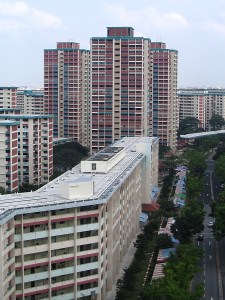

With the latest generation of high-rise buildings reaching new heights of close to 2,000 feet, the supertall construction boom is bringing new challenges as projects are built higher, faster and with increasing complexity. As the (re)insurer for many of the world’s tallest buildings, including the soon to be ‘world’s tallest building’, the 3,280 ft. Kingdom Tower in Jeddah, and New York’s One World Trade Center, engineering insurer Allianz Global Corporate & Specialty (AGCS) analyzes the challenges of assessing and managing such exceptional risks in its latest Supertall Buildings Risk Bulletin.
 The growth of the world’s tallest buildings continues to accelerate in the 21st century. By 2020, the average total height of the tallest 20 buildings in the world is expected to be close to 2,000 ft., or double the height of the Eiffel Tower, made possible by a combination of new technologies, innovative building materials and creative design elements.
The growth of the world’s tallest buildings continues to accelerate in the 21st century. By 2020, the average total height of the tallest 20 buildings in the world is expected to be close to 2,000 ft., or double the height of the Eiffel Tower, made possible by a combination of new technologies, innovative building materials and creative design elements.
US skyscraper dominance is declining. North America now accounts for only 16% of the world’s tallest buildings. At 1,776 ft., One World Trade Center is just over half the proposed height of Kingdom Tower but is the tallest building in the Western Hemisphere and fourth largest in the world.
South East Asia (48 percent) and the Middle East (30 percent) are home to more than three quarters of the tallest 100 buildings. China has 30 of the world’s top 100 tallest buildings in 15 cities, double North America. Dubai is home to 20 percent of the tallest 50 buildings.
“The eastward trend is set to stay, driven by rapid economic and demographic growth, urbanization, strong investor appetite for flagship real estate assets and lower labor costs than in the traditional Western markets,“ explains Ahmet Batmaz, Global Head of Engineering Risk Consulting at AGCS.
While concepts for the first mile-high building already exist, elevator technology is lagging behind building technology. Elevators currently can only transport people about 2,000 ft., mainly due to challenges in braking and cabling technology. Other limiting factors include:
At the same time new challenges continue to arise. Glass facades have raised concerns about the long-term impact of “solar gain” – the extent to which a building absorbs sunlight and heat – with governments introducing regulations around shape and structure.
AGCS engineering risk experts maintain that these projects are highly complex, as they can involve up to 10,000 workers and over 100 subcontractors. Potential challenges of supertall constructions include:
To view or download the AGCS Supertall Buildings Risk Bulletin visit: http://www.agcs.allianz.com/assets/PDFs/risk%20bulletins/Supertall-Buildings-Bulletin.pdf